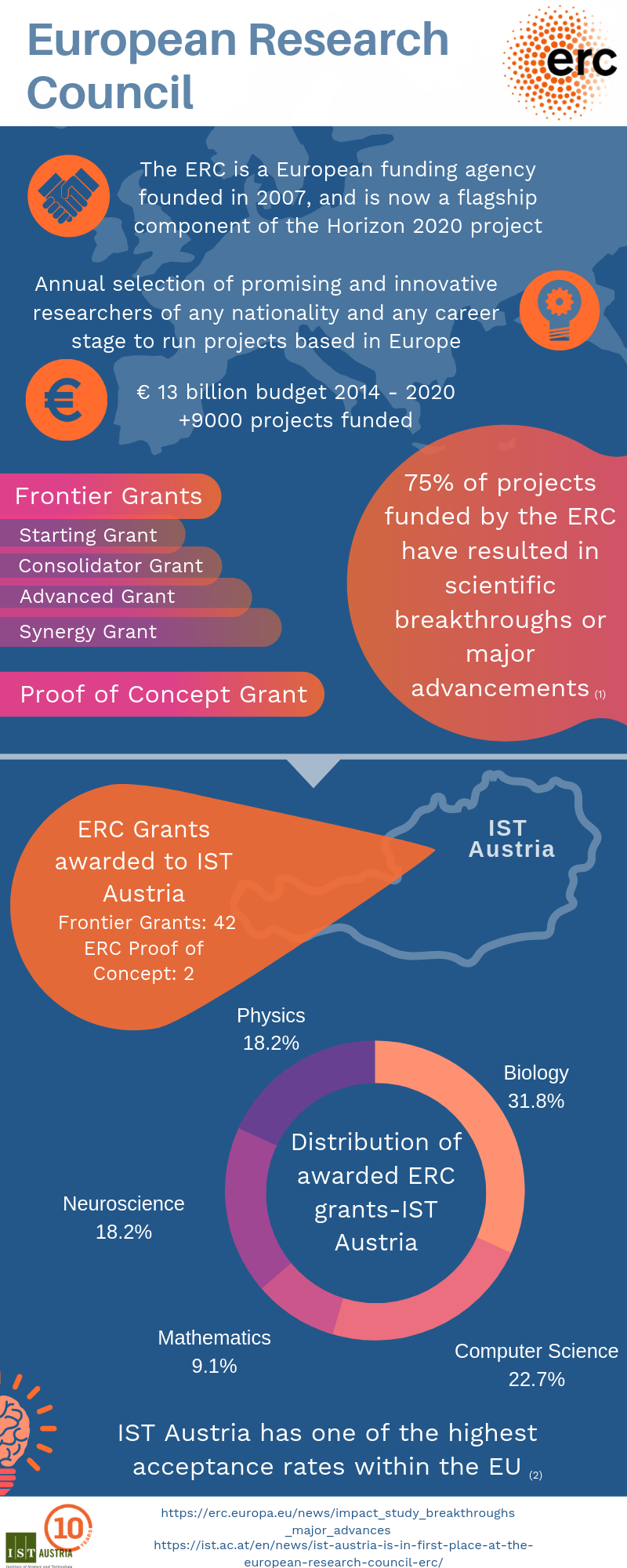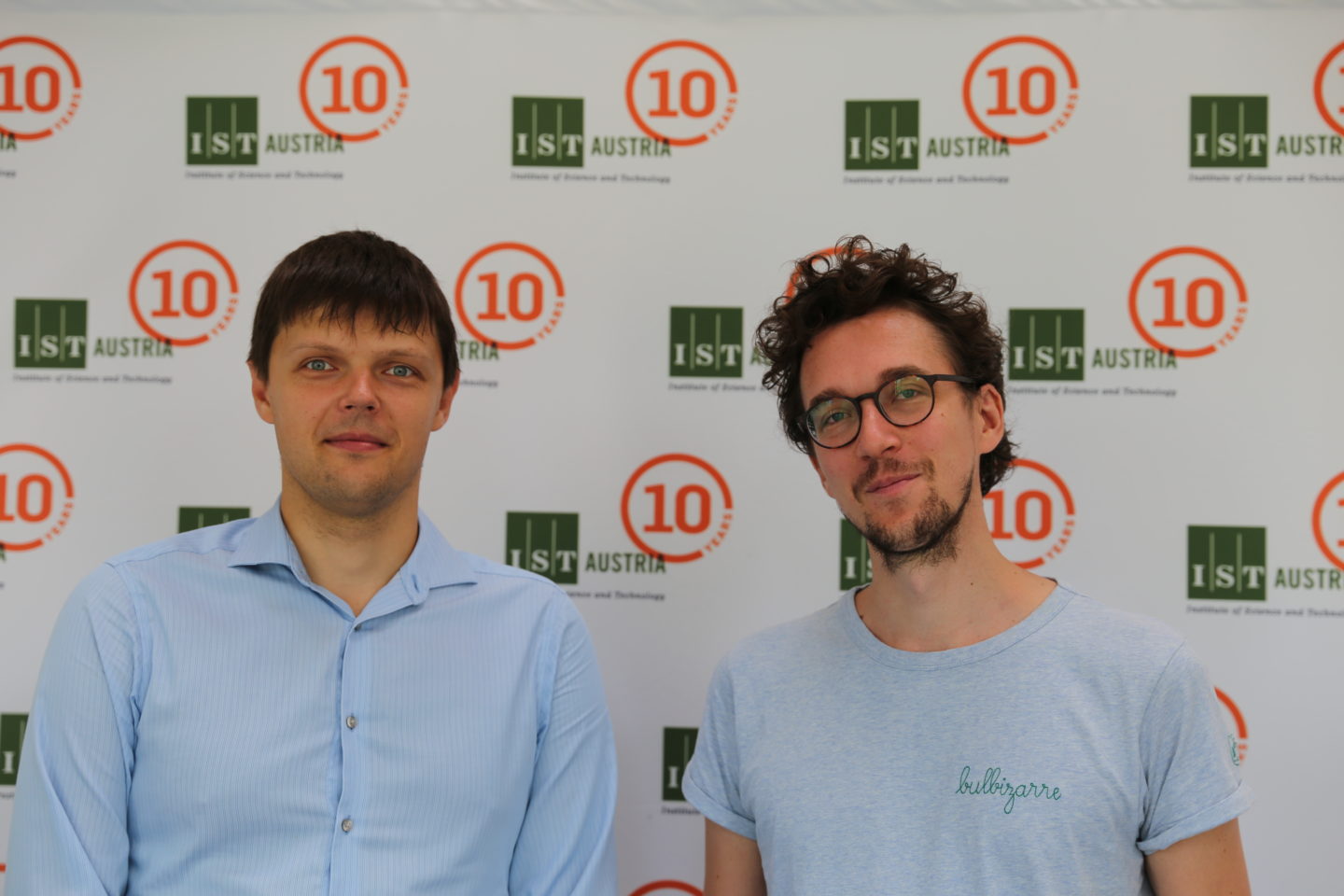September 3, 2019
Two ERC Starting Grants for IST Professors Edouard Hannezo and Maksym Serbyn
The European Research Council (ERC) has awarded the Institute of Science and Technology Austria (IST Austria) two grants for frontier research set to improve our understanding of organ morphogenesis and quantum systems.
Two IST Austria professors — Edouard Hannezo and Maksym Serbyn — have been awarded €1.5 million each by the European Research Council (ERC) to do fundamental research into the biophysical mechanisms that orchestrate the generation of branched organs and explore how isolated quantum systems can avoid a thermal equilibrium state, respectively. The two grants serve as part of the ERC’s ‘Starting Grant’ initiative designed to support future research that has the potential to contribute to major scientific breakthroughs.
Improving the science of both these areas not only has ramifications for the better understanding of organ morphogenesis or quantum physics, but also could help the advancement of numerous existing real-world applications such as the 3D printing of organic tissue and quantum computing—through contributing to the underlying fundamental knowledge behind these innovations.
Edouard Hannezo: Modelling the biophysical mechanisms behind organ generation
The formation of branching organs such as the lung, prostate, kidney, or mammary gland —branched morphogenesis— involves fairly complex processes on various scales. The mechanisms by which molecular signals and cellular behaviors give rise to a robust macroscopic organ structure remains a fundamental and open question. In his ERC Starting Grant project “Design Principles of Branching Morphogenesis”, Professor Edouard Hannezo and his research group will try to gain a broader understanding of the underlying mechanisms of branched organ formation applying state-of-the-art computational and systems biology methods.
“By combining systems biology with biophysical approaches at the subcellular, the cellular and the organ scale, we expect to find out about some of the core principles of pattern formation and tissue sculpting in complex branched organs,” says Edouard Hannezo who joined IST Austria located in Klosterneuburg in 2017 as leader of the research group “Physical Principles in Biological Systems”. “We are particularly interested in learning to understand how stochastic rules lead to robust morphogenetic output, how cell fates are defined on a cellular level and how mechanical forces and biochemical signals are regulated to define the large-scale structure of an entire organ.”
Maksym Serbyn: Enhancing our knowledge of quantum behavior in the natural world
Some quantum systems fail to achieve thermal equilibrium. This can in turn, allow these systems to exhibit a number of exotic behaviors, some of which are only possible at extremely low or absolute zero temperatures (i.e. 0 Kelvin or -273.15 °C). Improving the understanding of such systems in this area has important ramifications not only for quantum physics but also quantum computing.
In his ERC Starting Grant project “Non-Ergodic Quantum Matter: Universality, Dynamics and Control”, Maksym Serbyn and his research group will build a unified theory of quantum systems that escape thermal equilibrium — non-ergodic quantum matter — by classifying the universal properties and phases of this quantum state of matter along with investigating possible ways to control them.
“Our overall goal for the project is to provide a foundation for a complete theory of non-equilibrium many-body systems,” says Maksym Serbyn, a well-known researcher in his field and recent recipient of the Austrian Physical Society’s ‘Ludwig Boltzmann Prize’. Since 2017, Professor Serbyn has led a research group at IST Austria which is primarily concerned with research topics in Quantum Dynamics and Condensed Matter Theory.
ERC study confirms impact of funding scheme
Recently, the annual statistical analysis of the ERC showed that 75% of projects funded by the scheme have resulted in major scientific breakthroughs or advances. Fundamental, curiosity-driven research, such as what is being realized by these two projects by Maksym Serbyn and Edouard Hannezo, typically opens new horizons, which in turn, has the potential to greatly improve not only our scientific understanding but also advance existing and future technologies. With two thirds of its faculty being ERC grantees, 42 frontier ERC grants overall and a success rate of almost 50%, IST Austria is among the most successful institutes within the European research area.





